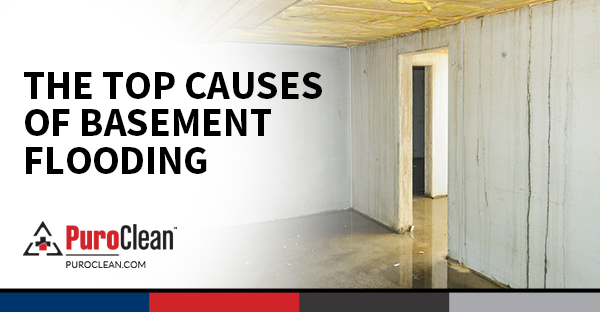Table of Contents
As we watch Hurricane Season unfold and Florida brace for yet another powerful storm, it’s a wake-up call for homeowners everywhere, especially here in Los Angeles. While we might not be at the center of hurricanes, flooding remains a significant threat due to heavy rains, urban development, and unpredictable weather patterns. Protecting your home from potential flood damage is not only a matter of safety but also a smart financial decision.
In this post, we’ll walk you through five essential flood protection strategies to safeguard your Los Angeles home. Don’t wait until it’s too late—now is the time to take action.
Flood Protection Strategies
1. Install a Sump Pump in Your Basement
One of the most effective ways to prevent flood damage is by installing a sump pump, especially if your home has a basement or crawl space. Los Angeles might not get the same heavy rains as other regions, but when we do, it often leads to flash floods due to our dry environment not absorbing water quickly enough. A sump pump will help remove excess water and prevent flooding in your basement, protecting your foundation and valuable belongings.
Pro Tip: Make sure your sump pump has a battery backup, so it continues to operate even during a power outage, which is common during storms.
2. Grade Your Yard for Proper Drainage
The way your yard slopes can either channel water away from your home or direct it toward your foundation. Improper grading is one of the leading causes of residential flooding, even in areas that don’t typically see heavy rainfall. A professional landscaper can help ensure your yard has the right slope and drainage system to keep water flowing away from your property during a storm.
By having proper grading, you reduce the risk of water pooling around your foundation and seeping into your home. Consider this a long-term investment in both flood prevention and the overall health of your home.
3. Seal Your Windows and Doors
Gaps around windows and doors are an open invitation for floodwaters to enter your home. Sealing these vulnerable areas with weather stripping, caulking, or even waterproofing membranes can go a long way in keeping water out. In a city like Los Angeles, where homes aren’t always built to withstand large volumes of water, taking these simple precautions can prevent costly damage down the road.
For even better protection, consider installing flood barriers for your doors and windows. These are temporary but highly effective solutions for keeping water out during a major storm.
4. Maintain Your Roof and Gutters
Your roof and gutters are your first line of defense against water. If your roof has missing shingles, cracked tiles, or other vulnerabilities, water can easily find its way inside your home during a storm. Similarly, clogged gutters prevent rainwater from flowing away from your house, leading to overflow and potential flooding around your foundation.
Regularly inspect your roof for damage, especially before the rainy season, and keep your gutters clean and free of debris. You can also install gutter guards to prevent leaves and dirt from clogging the system.
5. Purchase Flood Insurance
Many homeowners assume that their standard insurance policy will cover flood damage, but that’s often not the case. Flood insurance is a separate policy, and in areas like Los Angeles, where floods are considered a low-probability, high-cost event, many people overlook this vital coverage. However, flash floods can strike quickly, leaving you with thousands of dollars in damages that aren’t covered by your regular insurance.
Take the ongoing hurricane in Florida as a reminder: extreme weather events are unpredictable, and having flood insurance can be the difference between recovering quickly and facing financial ruin. Check FEMA’s National Flood Insurance Program (NFIP) for more information and resources to protect your home.
Learning From Florida: A Wake-Up Call for Los Angeles Homeowners
The devastation we’re witnessing in Florida should serve as a stark reminder of how unpredictable and dangerous extreme weather can be. While hurricanes may not directly hit Los Angeles, the heavy rains and storms that sometimes follow can still cause flash flooding, particularly in urban areas. According to the National Weather Service, flash floods can happen with little warning, making preparation even more critical.
Actionable Tip: Even if you feel relatively safe from floods, use this time to assess your flood risk. The unpredictability of climate change has already affected weather patterns, and staying prepared is the best way to protect your family and property.
Bonus Tip: Use Sandbags During Extreme Weather Events
If you know heavy rains are coming, such as during the rainy season or after a weather advisory, sandbags are a great temporary solution to direct water away from your home. They are often available for free from local fire stations or public works departments. Strategically placing sandbags around doors, windows, and other potential entry points can significantly reduce the risk of water intrusion.
Conclusion: Don’t Wait Until It’s Too Late
Floods might not be the first thing you think about as a Los Angeles homeowner, but that doesn’t mean the risk isn’t there. By taking proactive steps like installing a sump pump, grading your yard, sealing your home, maintaining your roof, and investing in flood insurance, you’ll be much better prepared to handle whatever Mother Nature throws your way.
Take a cue from what’s happening in Florida—these natural disasters are a sobering reminder of how quickly things can go wrong. Protect your home, and don’t wait until the next storm is on the horizon to take action.
For more information on flood prevention, check out our flood damage restoration services here.
Stay safe, Los Angeles!




 PuroClean of Huntington Park LA
PuroClean of Huntington Park LA